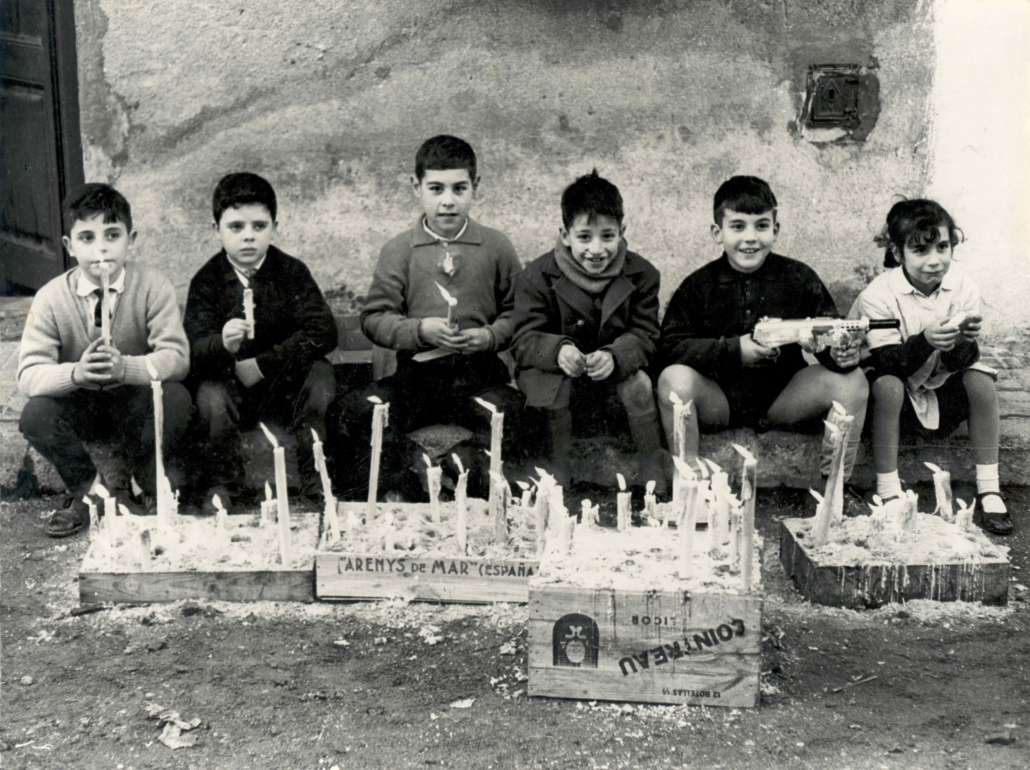The celebration of the day of the dead in Roman times, in some aspects reminds us of the origins of the feast of All Saints that we celebrate nowadays, the fruit of the Christian tradition, and which maintains some habits that were already practiced by our ancestors 2,000 years ago. However, the time of year they are celebrated is not the same.
The equivalent of the day of the dead for the Romans was the Parentalia, which was celebrated between 13th and 21st February. They had a funerary and expiatory character, they were days considered ominous, the temples were closed and marriages were not celebrated. Relatives visited the graves of their ancestors and left them wreaths of flowers, salt, bread soaked in wine and milk. In the same grave or in a nearby place, relatives used to share a meal with the deceased and asked them for prosperity for the family.
 Roman mosaic depicting the month of February, which was intended for purification
Roman mosaic depicting the month of February, which was intended for purification
Maintenance and visits to the tomb were frequent throughout the year, and at each visit or celebration flowers were worn that changed according to the season and were a symbol of renewal and happiness for the afterlife. Food (sometimes also slaughtered animals), drinks, honey and oil lamps, so that the deceased could light his way, were placed there . There were also libations in which wine, water or perfumes were sprinkled on the grave. The spraying of these liquids was believed to be an offering that facilitated communication between the living and the dead relative.
 Roman mosaic of a skeleton with two jugs, found in Pompeii (Italy)
Roman mosaic of a skeleton with two jugs, found in Pompeii (Italy)
In Rome, the burial of the dead was a sacred duty. The spirits of the dead became part of the gods Manes, if they had had a proper funeral (iustum), so that their memory lasted among the living. A good funeral (funus) meant that the deceased was said goodbye at home by his family and friends (conclamatio), there were lamentations and cries – often by women -, a funeral procession, the burial – either in an urn by cremation or a burial in a tomb or funeral space-, the epitaph and the frequent visit of relatives.
To deny the burial of a dead person was to condemn his soul to travel relentlessly, turning it into an evil spirit that would torment the living until its burial was resolved and the soul could rest in peace. On May 9th, 11th and 13th were the Lemuria, when the head of the household (pater familias) performed a series of rituals in order to expel these evil spirits from the home.
In the Museum of Badalona we preserve several remains related to the necropolises (cemeteries) of the Roman city of Baetulo, where burial tombs have been excavated – in which the dead were deposited in boxes made of tiles or wood–, and we have also found witnesses of incineration – where the remains of the dead were placed in ballot boxes. Accompanying the dead, we often find the ointments with which they had anointed the deceased, lacrimatoria with the tears of loved ones, lamps to illuminate the dead in his journey, coins to pay the boatman Charon, and plates and glasses to drink and eat. Above the tombs, the Romans placed tombstones, usually made of marble, with the name of the deceased, usually dedicated to the gods Manes. Many of these pieces can be seen in the permanent exhibition on the Roman world.
SIT TIBI TERRA LEVIS, is the text we read on many of these tombstones, a request in Latin that we translate as “let the earth be light to you.” This is a wish that, on days like these, we want to extend to all those who have preceded us and who we now have in mind.
 Ceramic funerary urns preserved in the Museum of Badalona. The uniqueness of these pieces lies in their material, as the urns were usually made of glass, marble or lead
Ceramic funerary urns preserved in the Museum of Badalona. The uniqueness of these pieces lies in their material, as the urns were usually made of glass, marble or lead









 Roman mosaic of a skeleton with two jugs, found in Pompeii (Italy)
Roman mosaic of a skeleton with two jugs, found in Pompeii (Italy) Ceramic funerary urns preserved in the Museum of Badalona. The uniqueness of these pieces lies in their material, as the urns were usually made of glass, marble or lead
Ceramic funerary urns preserved in the Museum of Badalona. The uniqueness of these pieces lies in their material, as the urns were usually made of glass, marble or lead
